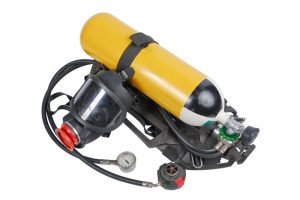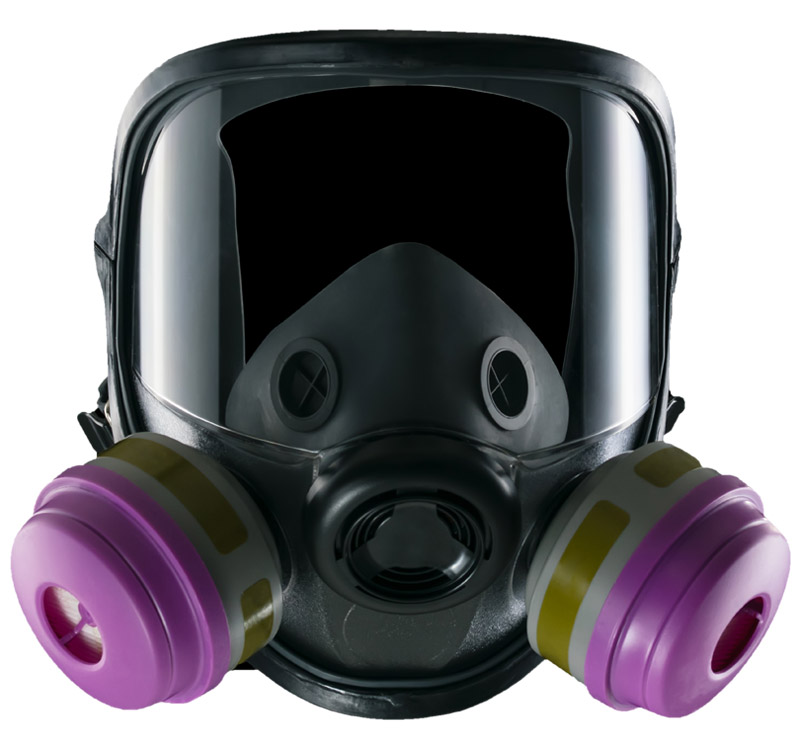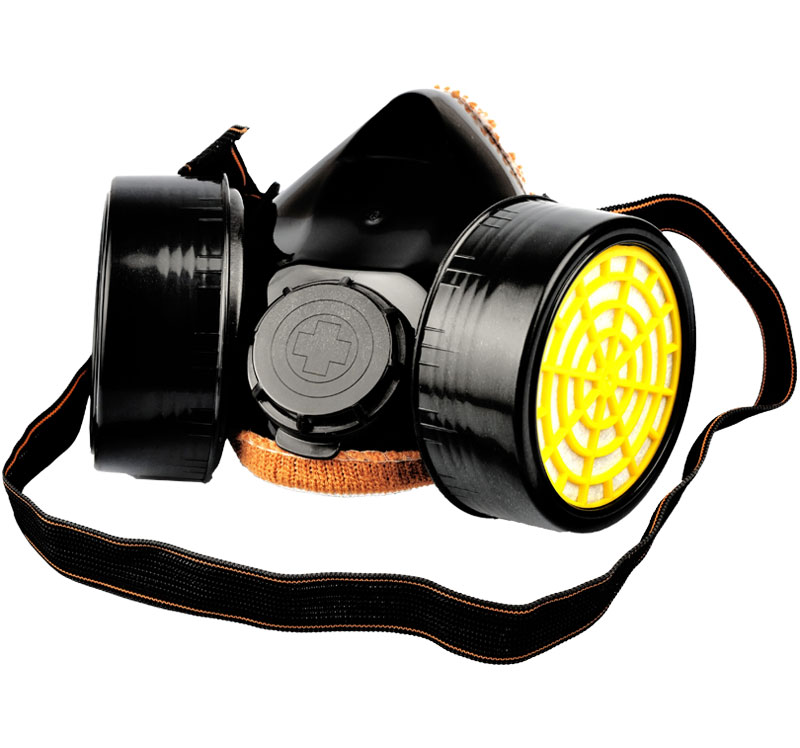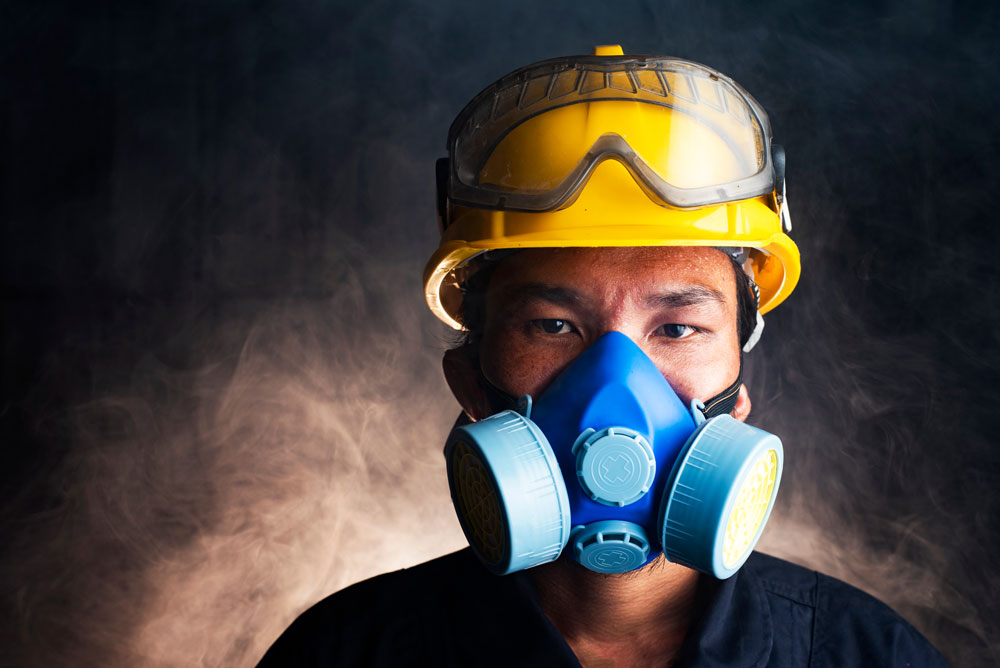Many workplace environments are exposed to a range of respiratory hazards. To safely protect yourself and your employees from these hazards, it’s important to understand what they are and how they affect people. With that information, you’ll be able to choose the appropriate respirator for the hazards present in your workplace. Here are the three categories of respiratory hazards that could affect a workplace:
01. Oxygen-Deficient Atmospheres
- The definition of an oxygen-deficient atmosphere is any atmosphere where there is less than 19.5% oxygen in the air.
- How this hazard can affect you. Oxygen-deficient atmospheres are dangerous. Working in an oxygen-deficient atmosphere can cause the following effects:
- Judgment and logic are impacted first as your brain starts to lose oxygen.
- Next, you may feel disoriented and have trouble seeing or hearing.
- Finally, sustained exposure to an oxygen-deficient atmosphere can lead to unconsciousness, or even death, if you are not removed from the hazardous environment and given the oxygen you need.
- Common examples of oxygen-deficient conditions:
- Confined workspaces, including, but not limited to:
-
- Silos
- Sewers
- Manholes
- Tanks

- The best type of respirator for this respiratory hazard is an air-supplied respirator. These respirators supply you with the oxygen you need to safely work in an oxygen-deficient atmosphere. It is important to note that air-supplied respirators are only designed to provide breathable air, they do not filter contaminated air.
- A workplace air-supplied respirator’s source of air must meet the required quality standards of ANSI Z86 for Type 1, Class D air.
-
- Confined workspaces, including, but not limited to:
02. Gas or Vapor Workplace Respiratory Hazards
- The definition of gas and vapor respiratory hazards are:
- Gases are a natural physical state of a material that is evenly distributed in air at room temperature.
- Vapors are contaminants formed from the evaporation of liquids into the air.
- Both gases & vapors:
- May exist as airborne contaminants
- Are usually invisible
- Are difficult to detect due to their lack of odor, color, or taste
- How these hazards can affect you. Both gases and vapors can be absorbed into the bloodstream, which can cause damage to your blood or internal organs, contributing to serious health effects, or even death.
- Common examples of industries and applications affected by gas or vapor hazards:
- Any application that works with chemicals, such as in laboratories
- Construction
- Manufacturing
- Agriculture
- The best type of respirator for this hazard is a gas or vapor air purifying respirator. These respirators use a chemical cartridge or canister to remove potentially hazardous airborne materials. These types of respirators do not protect against airborne particulates. If you need a respirator that protects against both particulates and gases or vapors, a combination air purifying respirator is the best choice.


03. Particulate Contamination Workplace Respiratory Hazards
- The definition of a particulate contaminant respiratory hazard is any environment where an air contaminant is present. Common particulate contaminant hazards include:
- Dusts are found everywhere and are formed whenever solid matter is broken down by either natural or mechanical forces.
- Fumes are very small metal particles that are released into the air when metals are heated.
- Smoke is produced when materials are burned. Burning creates a combination of gases, vapors, and very small particles that create a hazardous environment.
- Mists are small droplets of airborne liquids that are formed by spraying or mixing chemicals.
- How these hazards can affect you. Health effects associated with particulate contamination can vary depending on the types of particulate contaminating your workplace environment. Common adverse health effects include:
- Decreased lung function
- Increased respiratory symptoms
- Irritation of the airways
- Coughing
- Difficulty breathing
- Some particulate contamination hazards are also associated with long-term health risks like heart and lung diseases
- Common Examples of tasks or industries frequently exposed to particulate contamination hazards:
- Spray painting
- The use of dip tanks for coating or metal treatment
- Welding
- Soldering
- Smelting
- Working in or near smoke
- Working around any kind of dust, allergen, or irritant

- The best type of respirator for this type of hazard is an air purifying particulate filter respirator. These respirators make use of a mechanical filter that removes particles of dust, mists, or fumes. It’s important to remember that these types of respirators do not protect against gases or vapors. If you need a respirator that protects against both, a combination air purifying respirator may be appropriate. Combination air purifying respirators use both a mechanical filter and a chemical cartridge or canister for protection.

Exposure to atmospheres with respiratory hazards can have both short- and long-term impacts on your overall health. It’s important to understand what respiratory hazards may be present in your workplace, so you can adequately protect yourself and your employees.
For more information about respiratory awareness, including more details about the selection of respirators and which type of respirator is best for the hazards present in your workplace, we encourage you to check out eSafety’s Respiratory Protection course. Learn more about our online safety training system or request a free quote today!

